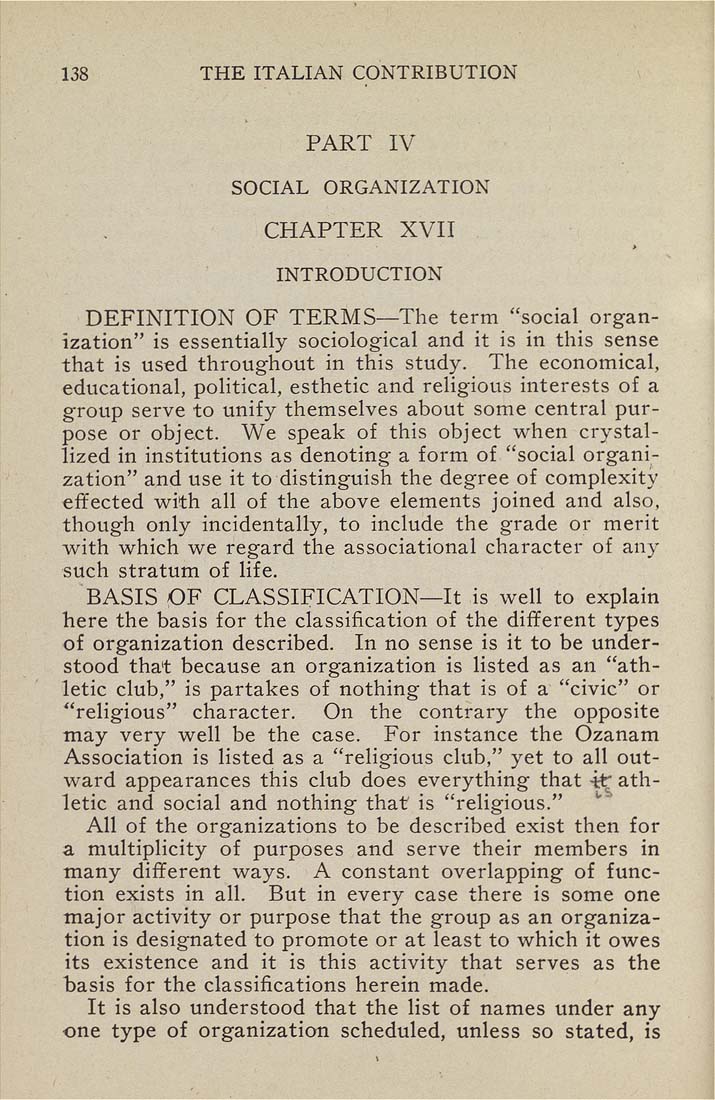138 THE ITALIAN CONTRIBUTION
PART IV
SOCIAL ORGANIZATION
CHAPTER XVII
INTRODUCTION
DEFINITION OF TERMS—The term"social organ¬
ization" is essentially sociological and it is in this sense
that is used throughout in this study. The economical,
educational, political, esthetic and religious interests of a
group serve to unify themselves about some central pur¬
pose or object. We speak of this object when crystal¬
lized in institutions as denoting a form of "social organi¬
zation" and use it to distinguish the degree of complexity
effected with all of the above elements joined and also,
though only incidentally, to include the grade or merit
with which we regard the associational character of any
such stratum of life.
BASIS OF CLASSIFICATION—It is well to explain
here the basis for the classification of the different types
of organization described. In no sense is it to be under¬
stood that because an organization is listed as an "ath¬
letic club," is partakes of nothing that is of a "civic" or
"religious" character. On the contrary the opposite
may very well be the case. For instance the Ozanam
Association is listed as a "religious club," yet to all out¬
ward appearances this club does everything that -it: ath¬
letic and social and nothing that is "religious."
All of the organizations to be described exist then for
a multiplicity of purposes and serve their members in
many different ways. A constant overlapping of func¬
tion exists in all. But in every case there is some one
major activity or purpose that the group as an organiza¬
tion is designated to promote or at least to which it owes
its existence and it is this activity that serves as the
basis for the classifications herein made.
It is also understood that the list of names under any
one type of organization scheduled, unless so stated, is
|








